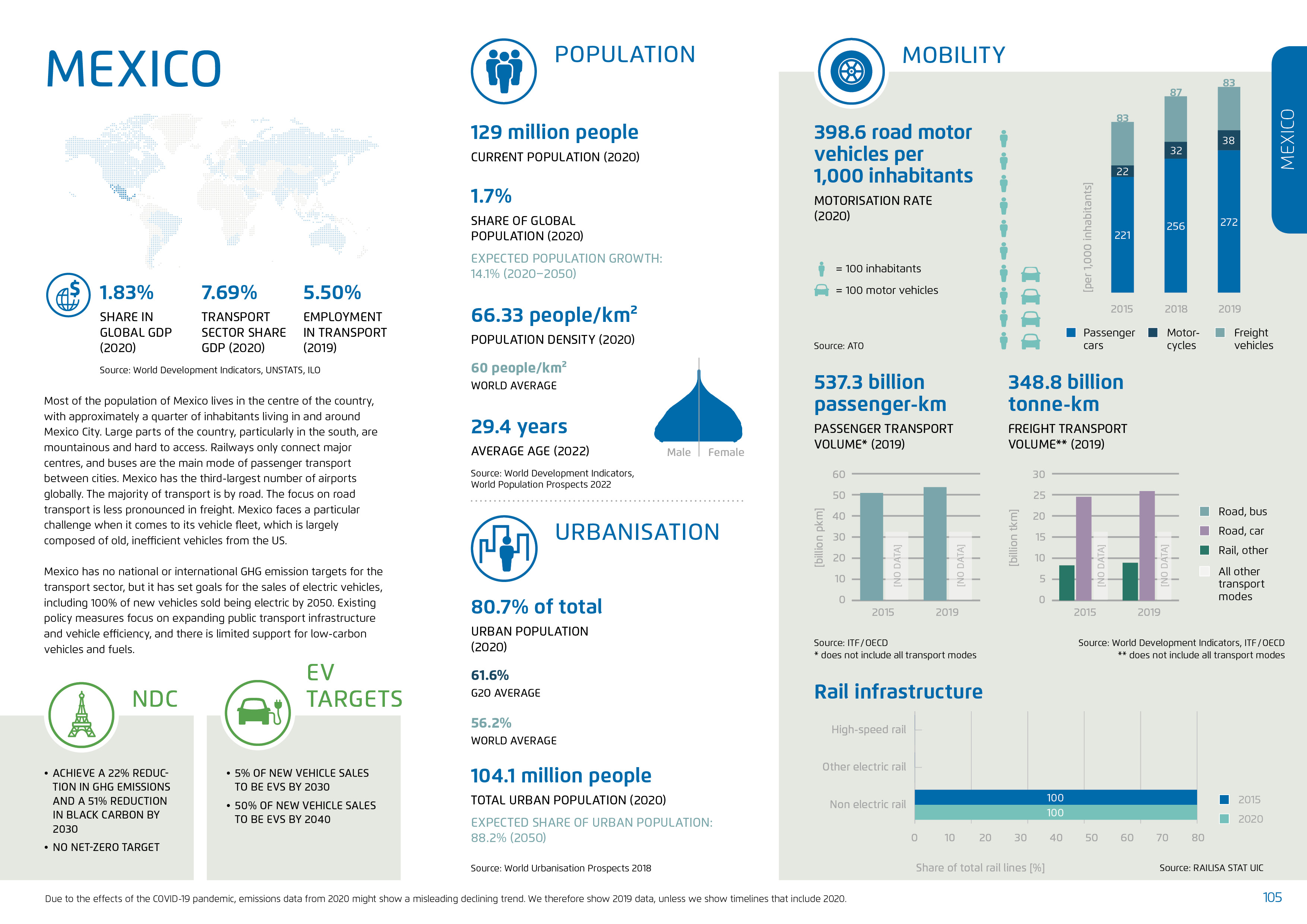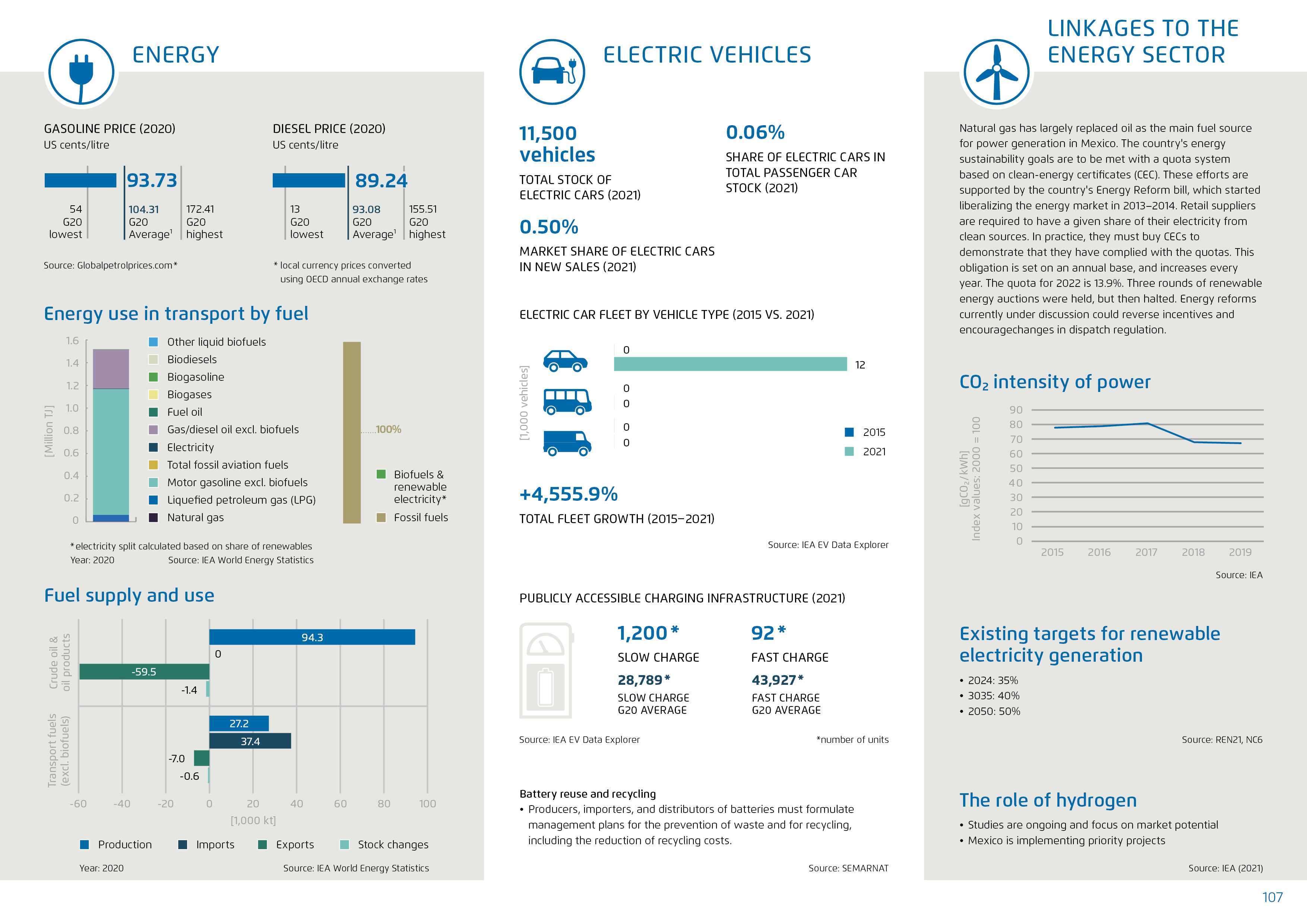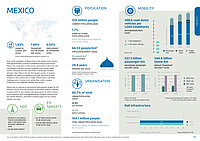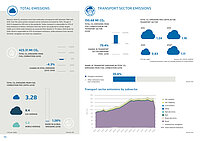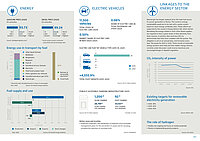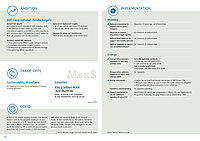This content is also available in: German
Mexico
Motorisation rate (2020): 398.6 vehicles per 1,000 inhabitants / Change in transport sector emissions (1990-2019): 79.4 % / Projected total CO2 emissions per capita in the transport sector in 2030: 1.11 t
Most of the population of Mexico lives in the centre of the country, with approximately a quarter of inhabitants living in and around Mexico City. Large parts of the country, particularly in the south, are mountainous and hard to access. Railways only connect major centres, and buses are the main mode of passenger transport between cities. Mexico has the third-largest number of airports globally. The majority of transport is by road. The focus on road transport is less pronounced in freight. Mexico faces a particular challenge when it comes to its vehicle fleet, which is largely composed of old, inefficient vehicles from the US.
Mexico has no national or international GHG emission targets for the transport sector, but it has set goals for the sales of electric vehicles, including 100% of new vehicles sold being electric by 2050. Existing policy measures focus on expanding public transport infrastructure and vehicle efficiency, and there is limited support for low-carbon vehicles and fuels.
Key figures on transport and climate
Published in Towards Decarbonizing Transport 2023.

